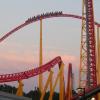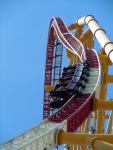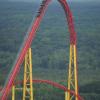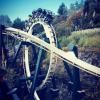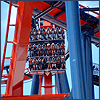Physics question for knex fans:
What is the terminal velocity and height required to achieve it? (what is the longest drop possible for knex before you are just wasting energy)
I want to make a big coaster, but I have found out (the hard way) that having a ride go from 7 greys to the floor results in a max. height of about 3 greys. When trying to create a large ride, the energy loss that results makes it very difficult to have a long track.
Is there a drop height that works best with knex? Does anyone know? And also, is there an angle that works best for the drop? A vertical drop just seems to waste power.
Any information that you guys can give me would be great!
Thanks!
Cedar point
Terminal Velocity
Started by
MaxXimumPain
, Jan 20 2012 04:20 PM
amazing b&m inversion loops standup
3 replies to this topic
#1

Posted 20 January 2012 - 04:20 PM
#2

Posted 20 January 2012 - 04:21 PM
Try lubricating your axles with silicone spray, supporting better, and show us some pictures of your structure. If you have bumps or sharp spots in your track, or if the pullouts/pull ins are not the right size, you can lose a lot of speed.
#3

Posted 20 January 2012 - 05:59 PM
Yeah, you would need a really tall drop (100's of feet) in order to obtain terminal velocity. the other factors that come into play besides air resistance is friction, bumps, and lack of support. Post pictures of the coaster in the knex construction threads. We can help you.
Automation is my specialty
If only I had more space/pieces/time.
#4

Posted 20 January 2012 - 06:05 PM
Track strength is also a factor. If your track flexes when a train passes over it that is energy being lost.




